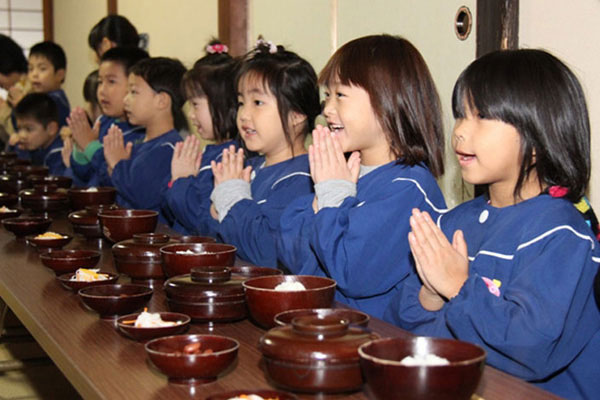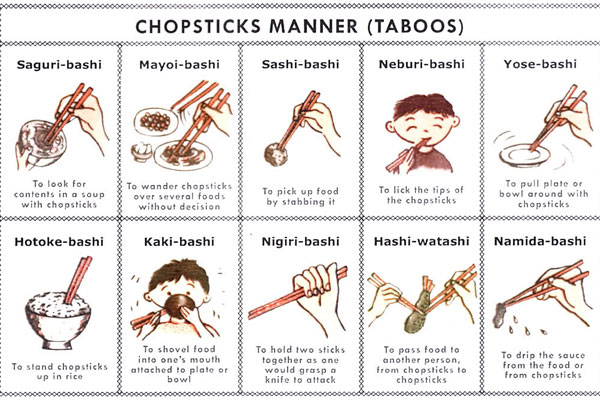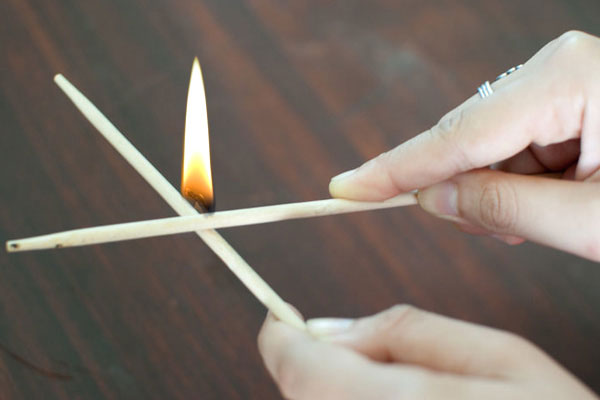You’ve been served a traditional Japanese meal for the first time. So many plates, so many dishes all at once! What happened to the soup course, the salad course? What do you eat first? The miso soup is the best bet, right? But maybe you need to respect the rice or something by taking a bite of that first. The side dish looks like an appetizer—that seems like a logical starter. But you’re a foreigner, so you might be forgiven for diving right into the main dish. Or does that make you look like you have no class?
Lucky for you, there is no wrong answer. The typical meal you see above is called Ichiju Sansai, which means, “one soup, three dishes”. For more on this classic style of Japanese meal, look up this article from Zojirushi. Some people do indeed go for the soup to whet their palates. Others dive into the main dish or one of the side dishes, especially if it’s calling out to you, begging you to taste it NOW! But the second move is almost always a bite of the rice. Once you have a mouthful of salted fish, or vinegary pickles, or sweet sour vegetables, you’ll crave a bite of hot, moist, fluffy rice to balance out what you just ate!
Are you beginning to understand why it’s not necessary to flavor your white rice with soy sauce? Ugh!
But even before you scarf up, let’s put you into a Zen type of mood so you don’t inhale your food. You may have heard about the custom of saying “Itadaki-masu” before actually taking that first bite. You may have even seen your Japanese friends clasping their hands in prayer and bowing to their meal. As much as it seems like this is the Japanese version of saying Grace in Western culture, it really isn’t. The literal translation is “I shall take” (the food before me); but it really implies, “Thank you for this meal.” Thank you to the farmers who raised this food with their hard work, thank you to Nature for allowing the farmers to do so, etc. It’s a more holistic gratitude than a worship.
By the same token, the companion phrase, “Gochiso-sama” is used after you’ve finished the meal to indicate being very satisfied with the feast, and to give thanks again before leaving the table.
OK, so now that the formalities are out of the way, let’s talk chopsticks. You can save yourself a lot of embarrassment by knowing some simple rules about chopsticks. You can be forgiven for not knowing how to use them properly–after all, you’re a novice, right? But you don’t want to commit any of these faux pas:
In particular, don’t stick them upright in your rice (they resemble sticks of incense at funerals), and don’t pass food from chopsticks to chopsticks (again, a ritual performed at cremations when metal chopsticks are used to pass the bones of the remains from relative to relative). Whew! You can see why these acts might actually make people uncomfortable. I’ve got another one to add to this list that’s strictly my pet peeve: “Kosuri-bashi”, the way everyone seems to think it’s necessary to rub and scrape their chopsticks together to get rid of splinters. In reality, unless you’re using some very poor quality chopsticks, modern wooden ones these days don’t really have splinters. In fact, you might be creating more shavings this way, or you might start a fire!
NOW you’re ready to start eating Japanese without looking like a Barbarian. Keep in mind that the rice and miso soup bowls can be picked up and brought to your mouth to drink directly from the bowl. Don’t slurp–just because you’re allowed to do it with noodles, doesn’t mean you can do it for soup. And don’t shovel the rice into your mouth; take a bit with your chopsticks and eat. The rest of the dishes should stay on your tray or table and eaten from the plates directly. If you’re serving yourself from a communal large dish of food, just bring some to your own plate before eating. It’s OK to bring your plate to the food to shorten the distance. And try to use the other end of your chopsticks instead of the end that you’ve just stuck in your mouth–better yet, hopefully a utensil has been provided for that purpose.
A lot of this is common sense, i know…but not all of it. Don’t even get me started on the ritualistic ways of eating sushi, or the formalities involved with drinking in the company of your boss or colleagues. That’s a whole topic for another day.
Photos courtesy of Iromegane, Zojirushi, Nairaland





Leave a Reply